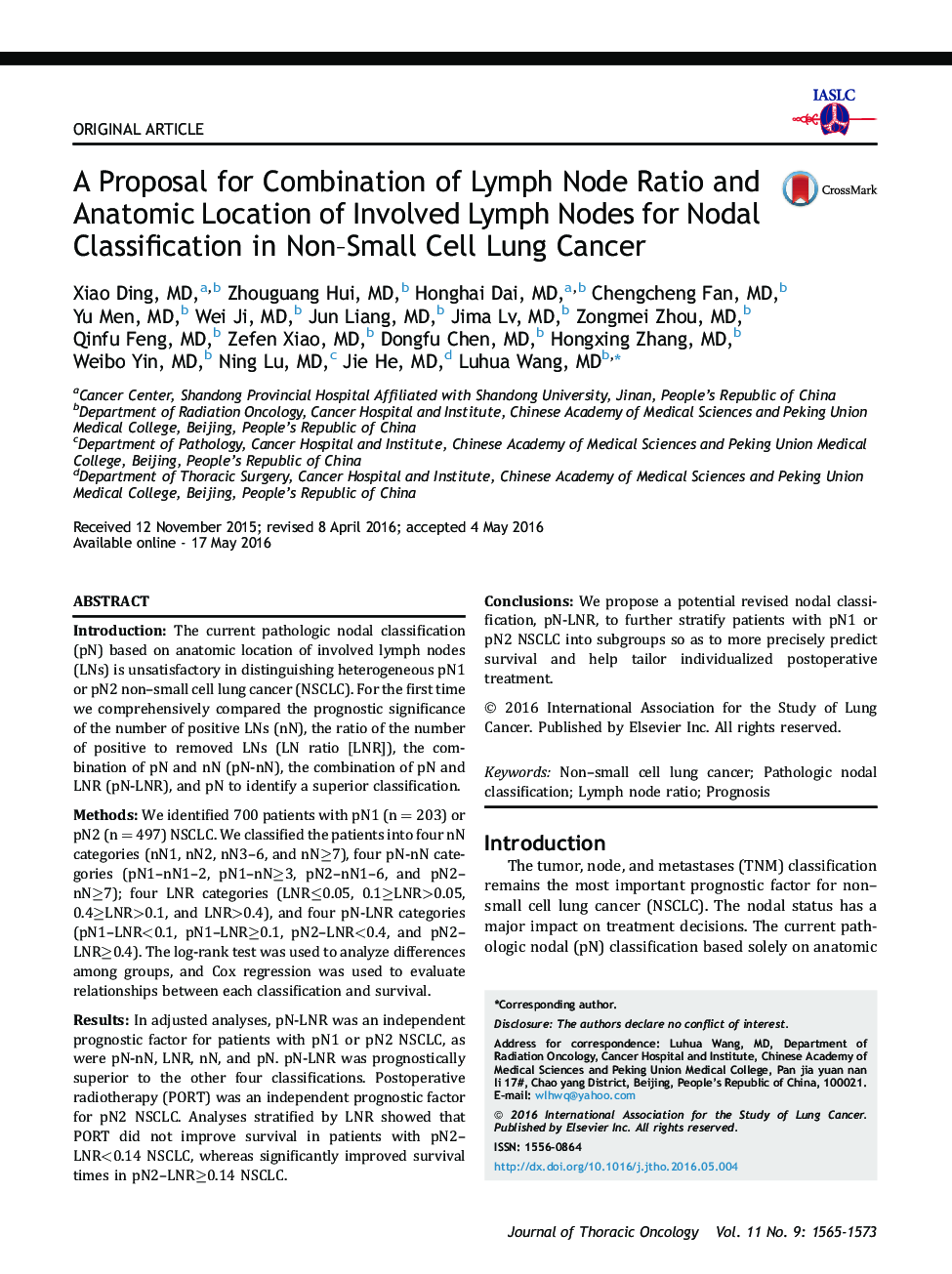| Article ID | Journal | Published Year | Pages | File Type |
|---|---|---|---|---|
| 6192419 | Journal of Thoracic Oncology | 2016 | 9 Pages |
IntroductionThe current pathologic nodal classification (pN) based on anatomic location of involved lymph nodes (LNs) is unsatisfactory in distinguishing heterogeneous pN1 or pN2 non-small cell lung cancer (NSCLC). For the first time we comprehensively compared the prognostic significance of the number of positive LNs (nN), the ratio of the number of positive to removed LNs (LN ratio [LNR]), the combination of pN and nN (pN-nN), the combination of pN and LNR (pN-LNR), and pN to identify a superior classification.MethodsWe identified 700 patients with pN1 (n = 203) or pN2 (n = 497) NSCLC. We classified the patients into four nN categories (nN1, nN2, nN3-6, and nNâ¥7), four pN-nN categories (pN1-nN1-2, pN1-nNâ¥3, pN2-nN1-6, and pN2-nNâ¥7); four LNR categories (LNRâ¤0.05, 0.1â¥LNR>0.05, 0.4â¥LNR>0.1, and LNR>0.4), and four pN-LNR categories (pN1-LNR<0.1, pN1-LNRâ¥0.1, pN2-LNR<0.4, and pN2-LNRâ¥0.4). The log-rank test was used to analyze differences among groups, and Cox regression was used to evaluate relationships between each classification and survival.ResultsIn adjusted analyses, pN-LNR was an independent prognostic factor for patients with pN1 or pN2 NSCLC, as were pN-nN, LNR, nN, and pN. pN-LNR was prognostically superior to the other four classifications. Postoperative radiotherapy (PORT) was an independent prognostic factor for pN2 NSCLC. Analyses stratified by LNR showed that PORT did not improve survival in patients with pN2-LNR<0.14 NSCLC, whereas significantly improved survival times in pN2-LNRâ¥0.14 NSCLC.ConclusionsWe propose a potential revised nodal classification, pN-LNR, to further stratify patients with pN1 or pN2 NSCLC into subgroups so as to more precisely predict survival and help tailor individualized postoperative treatment.
